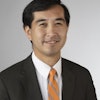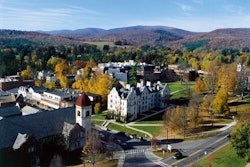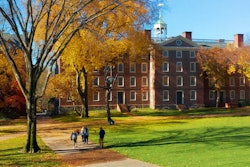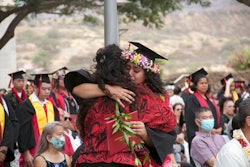Asian Americans Aren’t White Folks’ ‘Racial Mascots’
By Frank H. Wu and William Kidder
Affirmative action has almost always been framed as a Black and White issue. But as Michigan voters this fall consider the latest Ward Connerly ballot measure, which would prohibit consideration of race and gender in university admissions, it is becoming clear that Asian Americans are hidden in a dangerous blind spot. Although usually excluded from discussions about civil rights, Asian Americans are increasingly introduced as an argument against racial diversity. Yet like all Americans, Asian immigrants and their native-born children benefit from the modest efforts to include everyone in the American Dream.
The misleading claims about Asian Americans are quite common. For
example, in the 2003 Supreme Court cases involving the University of Michigan, even though the plaintiffs were White, their legal counsel obtained class action status to represent Asian Americans as well. They asserted that affirmative action harmed not only their Caucasian clients but “especially Asian Americans.”
Even scholars who say they support affirmative action repeat this error. Two Princeton University sociologists, who have said they believe that affirmative action is worthwhile, published a widely noticed study last year which stated that Asian Americans at elite college campuses would gain the most seats if Blacks and Latinos lost them.
Like many racial stereotypes, the so-called “model minority” status of Asian Americans contains a germ of truth. Unfortunately, it is exaggerated, distorted and often presented without causes and contexts.
The key finding of the Princeton study is actually that Asian Americans suffer from what law professor Jerry Kang has called “negative action.” In truth, Asian Americans are being treated differently — that is, worse — than White applicants with similar qualifications. Asian Americans are held to a higher standard than Whites, without any rationale. Since three White students were admitted for every one African- American or Latino student, it follows that, for Asian Americans, the benefits of ending “negative action” exceeds the benefits of terminating affirmative action.
Another appropriate description of the situation is that Whites are enjoying a form of affirmative action vis-à-vis Asian Americans. So the problem isn’t the existence of efforts to achieve a “critical mass” of historically excluded and under-represented minorities. Rather, the problem is long-standing practices that work to the advantage of Whites and harm Asian Americans. The former is constitutional; the latter, illegal.
A recently published study examines the numbers of Asian Americans in law schools before and after affirmative action bans took effect in California, Texas and Washinton. Contrary to predictions, there turned out to be fewer Asian Americans at the University of California, Los Angeles and the University of Washington without affirmative action. And there were significant drops for some Asian groups, like Filipinos.
Over time, the positioning of Asian Americans has become more sophisticated. In the early 1990s, there was concern about Asian Americans hitting a plateau in higher education admissions. At that time, Dr. Michael S. Greve, a co-founder of the Center for Individual Rights, wrote that it was “an opportunity to call, on behalf of a racial minority (i.e., the Asian applicants), for an end to discrimination. It was an appeal that, when made on behalf of Whites, is politically hopeless and, perhaps, no longer entirely respectable.”
His candid admission reveals how Asian Americans are being used and abused, to their own detriment as well as that of African-Americans and Latinos. Real discrimination against Asian Americans is whitewashed, and they are used for strategic purposes to attack other people of color. Ironically, groups that proclaim their belief in color-blindness show themselves readily able to be color-conscious in the most divisive manner. They have no problem pointing at Asian Americans if it suits their cause.
It is this cynicism that has led many Asian Americans who have studied affirmative action to become advocates for it. Law professor Sumi Cho observes that demagogues are trying to turn Asian Americans into “racial mascots” to camouflage an agenda that, if presented by Whites on their own behalf, would look too much like naked self-interest. Law professor Mari Matsuda proclaimed in a famous speech given to the Asian Law Caucus in San Francisco, “We will not be used.”
It is possible, of course, for reasonable people to have different opinions about the fairness and effectiveness of affirmative action. It would not be productive, however, for us to believe that Asian Americans must oppose Blacks and Latinos, as the face of the nation changes profoundly and irrevocably. We can and must do better, by building bridges among all of us who share a vision of a diverse democracy.
— Frank H. Wu is dean of Wayne State University Law School, and William Kidder is a senior policy analyst at the University of California, Davis.
© Copyright 2005 by DiverseEducation.com





















